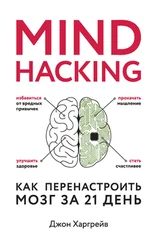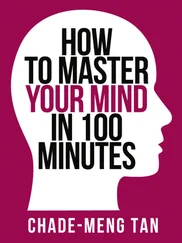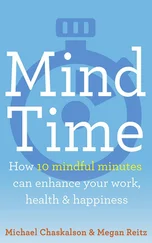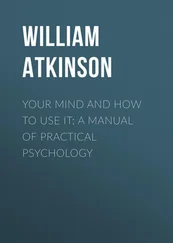Just get up and do it.
Finding the “tiny goals” that will help you move forward on the big goals is both an art and a science. Fortunately, there’s an algorithm that will help you—or, more accurately, an acronym .
Focusing Your Mind Like a LASER
A laser is focused light.
Light is all around us: in the sunlight outside, the fluorescent lights overhead, the screen that you may be staring into right now. A laser takes that light and focuses it into a high-powered beam that can cut through steel, destroy missiles from space, or accompany the Allman Brothers. In fact, LASER was originally an acronym for “light amplification by stimulated emission of radiation.” I love that acronym, because it shows a laser is essentially amplified light .
Similarly, the energy of our minds is usually diffused over many different thoughts, fears, memories, and time-wasting daydreams. With mind hacking, we are focusing this mental energy, much as a laser powerfully focuses light into a diamond-cutting beam of power. This focused mental energy lets us set and accomplish the tiny goals that move us toward the big goals. Just like the original LASER, there is an acronym that can help us define a good subgoal: one that is Limited, Achievable, Specific, Evaluated, and Repeatable.
• Limited.A good subgoal is small. Dr. Peabody asked recovering alcoholics to list every item on their schedule for the next day, including periods of rest. For the alcoholic, crossing “Take a nap” off a to-do list might seem silly, but it provides positive momentum: I set my mind to do this small thing, then I did it . A limited subgoal like “Work on my app for three hours this week” is better than “Add new feature X to app,” since feature X may end up taking forty hours.
• Achievable.A good subgoal is something you can actually accomplish . Again, being able to point to a tiny goal that you achieved creates an upward spiral, where making progress motivates you to make more progress. “I will exercise for twenty minutes, three times this week” is a better subgoal than “Lose forty pounds by May.” Small successes tend to snowball into bigger successes.
• Specific.A good subgoal is simple and clear. Most people have only a vague idea of what they want in life, and a vague idea of how to go about getting it. The skills you’re learning in this book are teaching you to be specific with your mind about what you want, and now you must be specific about the next step in getting there. For example, “I will research online schools for half an hour today” is a better subgoal than the vague and fuzzy “Look into going back to college.”
• Evaluated.It’s important to figure out, “Did I do it?” Write down your subgoals , so that you can come back on a daily and weekly basis and see whether you actually accomplished them. If not, why not? Evaluating your subgoals can help you identify the issues that are holding you back (“I was too busy,” “I got caught up in a TV show,” “I overslept”), figure out strategies for overcoming them, and create better subgoals in the future.
• Repeatable.Repetition is key. While some subgoals are one-shot deals (“Enter motocross competition,” “Introduce myself to world leader”), the best subgoals are the ones that you can turn into a regular habit, a flywheel of success. “I will go to one support group this week,” “I will study for half an hour today,” and “I will practice my concentration game this morning” are all tiny goals that will be immensely powerful if repeated over time, like a LASER.
An easy way to get started with these tiny goals is to simply ask, What’s the next step? If you want to get free of your anxiety, what’s the next step? (Practice your concentration game today.) If you want to start your own llama grooming business, what’s the next step? (Spend an hour researching competitors this week.) If you want to win the Nobel Peace Prize, what’s the next step? (Get rid of your semiautomatic weapons.) Then run them through the LASER test, and act .
You already know the laser-like power of these tiny goals, because you’ve been practicing them for years. When your fourth-grade teacher gave you daily multiplication drills, when your boss asks you for a weekly status report, when a social media website encourages you to “make your profile 100 percent complete,” they’re all leveraging the power of tiny goals. In mind hacking, we’re now managing ourselves , setting tiny goals rather than having others set them for us.
To paraphrase former U.S. Army chief of staff Creighton Abrams, “How do you eat an elephant? One bite at a time .” Sir Tim Berners-Lee didn’t try to swallow the entire World Wide Web; he just took the tiny bite of drafting up a proposal for his boss. Day by day, piece by piece, he built the tools needed for the Web to flourish. You can eat the elephant, too, if you focus on taking one bite at a time .
Psychologist Richard Wiseman created a large-scale scientific survey involving over five thousand participants trying to achieve big goals like the ones we’ve been discussing: losing weight, starting a business, and learning new skills. One of the key findings was that people who broke their goal into a series of tiny goals were far more successful —in essence, creating a step-by-step plan for getting to their goals. “These plans were especially powerful,” Wiseman reports, “when the subgoals were concrete, measurable, and time-based.” 7Focused, in other words, like a LASER.
Skillfully defining these tiny goals, then acting on them, gives you a feeling of accomplishment and satisfaction. Tiny goals give you confidence to tackle bigger goals. Like a cartoon snowball rolling down a hill (I’ve never seen a real snowball do this, but it looks fantastic in cartoons), these little goals accumulate. Doing just a little bit builds your momentum to do more.
But there’s another reason to think in terms of tiny goals: it’s fun .
Your Life Is a Video Game
One of my favorite video games is called Beautiful Katamari , which is one of those fantastically insane creations that could only come from Japan. In the game, you start with a tiny sphere, a kind of sticky snowball called a katamari . Using your controller, you roll this sphere through different environments—a candy shop or a fast-food restaurant—rolling over random objects like poker chips and wheels of cheese, gradually making your katamari bigger.
As the game progresses, your katamari gets big enough to roll through towns, picking up farm animals and boats. It’s wildly hilarious to see struggling cows and people hanging on to the side of your katamari as it gathers mass. Then you move to the city level, picking up buildings and amusement park rides. Eventually your katamari is big enough to roll over landmasses on the face of the earth, until finally you’re in space, picking up planets and stars.
There’s an odd kind of satisfaction at each tiny accumulation in Beautiful Katamari , because our minds—especially geek minds—are wired to accumulate. This is something video game designers have known since the earliest days: the point system of Space Invaders begat the level system of Pac-Man , which begat the world system of Super Mario Bros ., which begat the current systems of badges, leaderboards, hidden levels, unlockable weapons, and Easter eggs. There are even meta-scoring systems like Xbox’s “Gamerscore,” which accumulates achievements across every Xbox game you’ve played.
Читать дальше
![Джон Харгрейв Mind Hacking [How to Change Your Mind for Good in 21 Days] обложка книги](/books/404192/dzhon-hargrejv-mind-hacking-how-to-change-your-min-cover.webp)











